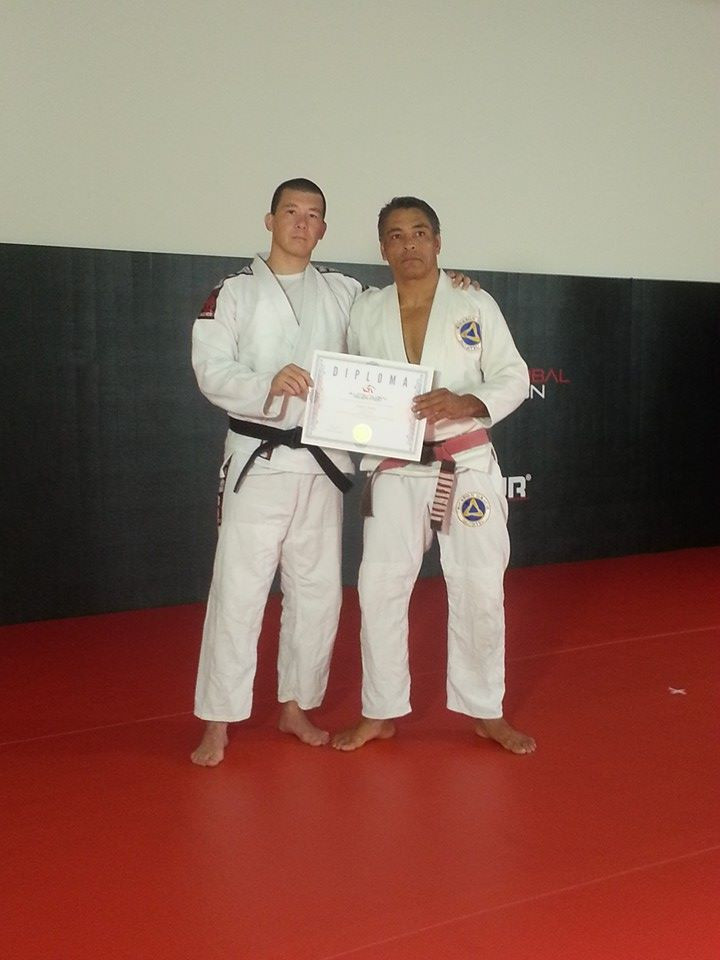Connections
Connection is a vital part of any martial art where grappling sits front and center, especially jiu-jitsu. As Henry Akins told Bernardo Faria of BJJ Fanatics in the below video, it’s one of the most important concepts to understand in jiu-jitsu because it’s always happening. He then goes to explain the three different types of connections and the different roles they play in jiu-jitsu, as well as one of the most important skills in any martial art, which is learning how to effectively terminate a connection.
Connection to the Ground
All too often overlooked, connecting to the ground is vital for balance and power. This is true whether you and your opponent are standing or have gone to the ground.
Anyone with a background in striking, especially boxing, knows the importance of footwork in a standing fight because it allows you to dodge attacks and generate power. When you are firmly rooted to the ground, you can use your entire body when throwing a punch. In martial arts where takedowns, throws, and clinch fighting are more of a focus, connecting to the ground is also important because it gives you the opportunity to maintain balance and use leverage. As Henry demonstrates in the above video, just changing the angles at which your feet connect to the ground can make you virtually unmovable.
The same principles apply in a ground fight. Connecting to the ground allows you to build a foundation. The more points of contact that you have, the more you will be able to either create leverage or improve your balance. Moreover, if you can build that foundation just by relying on the structural strength of your skeleton (i.e., framing), this will also allow you to be more efficient and reserve your strength. Conversely, if you can prevent your opponent from having points of contact with the ground, you can take away their ability to use leverage to generate power or maintain balance.
Connections Within Your Body
Being rooted to the ground is the ultimate source of strength, but a close second comes your legs and hips. These are some of the strongest muscles in the body, and they are a source of explosive power whether you’re turning on a fastball or throwing a right hook. Moreover, using these muscles to generate strength allows you to avoid using just arm strength and becoming exhausted more quickly. As Henry recommends, always try to use the biggest and strongest muscles to do the most amount of work to maximize efficiency.
Connections to Your Opponent
Henry notes that there are a few varieties of connections to your opponent. It can come from gripping their gi or a part of their body. It can come from framing. It can also come just using an appendage to apply pressure (e.g., your forearm in a rear naked choke). No matter the type of connection, Henry notes that having a connection means having the ability to influence your opponent’s movement. “Connection makes our jiu-jitsu so much more efficient. When we start to commit energy to doing something, it works immediately.”
For example, merely grabbing onto someone’s gi may not mean anything if there’s a lot of slack. You will have to use more energy to pull them in the direction that you want. However, if you remove the slack, just a little tug might be enough to throw them off balance.
Connecting to your opponent and weight distribution are also related, since you can use weight distribution and different points of contact with your opponent to more efficiently apply pressure. As Henry says, this principle is something that you begin to understand the more time you spend rolling with a partner and internalizing the mechanics of jiu-jitsu.
“Energy can transfer either way. I can use it against you, or you can use it against me, so it’s really important to recognize where connection is created.”

Killing a Connection
One final point that Henry brings up is the importance of killing a connection, which is knowing when to break away from an opponent before they can effectively apply technique against you. Henry touches on two different ways to kill a connection: by changing the angle and by relaxing.
Changing the angle is paramount to defense in jiu-jitsu. It can disrupt your opponent’s balance and make them break off an attack. Even more simply, it can mean moving your body in a way so that your opponent’s connection is weaker. For example, if someone places their hand firmly on your chest to push you, they want that connection to be at 90 degrees. If you turn your torso and change the angle, that is going to mean less force pushing on you.
Another way to kill a connection is by relaxing. Though this sounds strange, relaxing makes it harder for your opponent to control you. “Once we tense up, our whole body gets connected,” Henry says. Your opponent can then use that rigid connectivity to influence your entire body. Conversely, if you relax, that connectivity goes away. You’re effectively changing the angles of the connections within your body and the way that your weight is distributed. This will make it far more difficult for your opponent to control you.
“If you’re trying to move or manipulate your opponent, you have to make a connection. If we don’t want to be moved or manipulated by our opponent, we have to be able to kill a connection,” Henry concludes.

